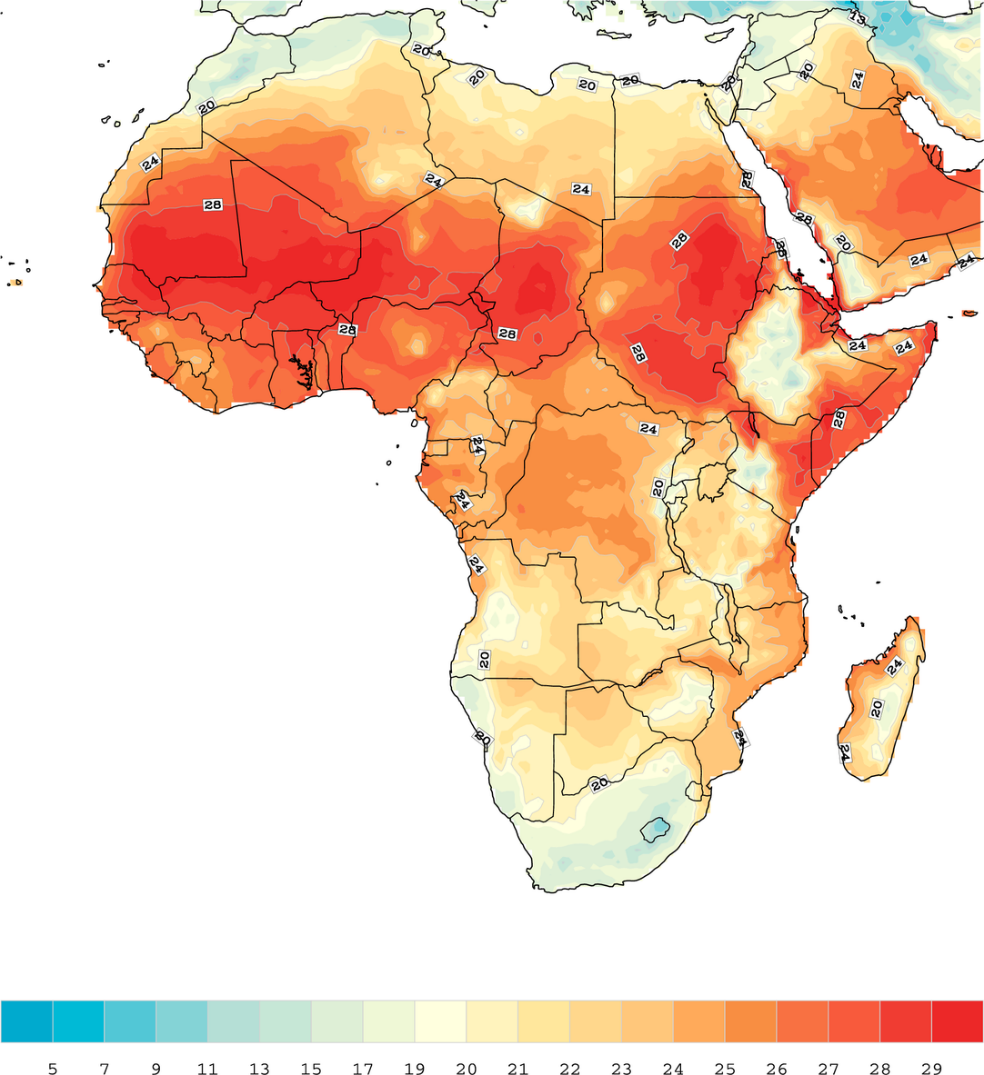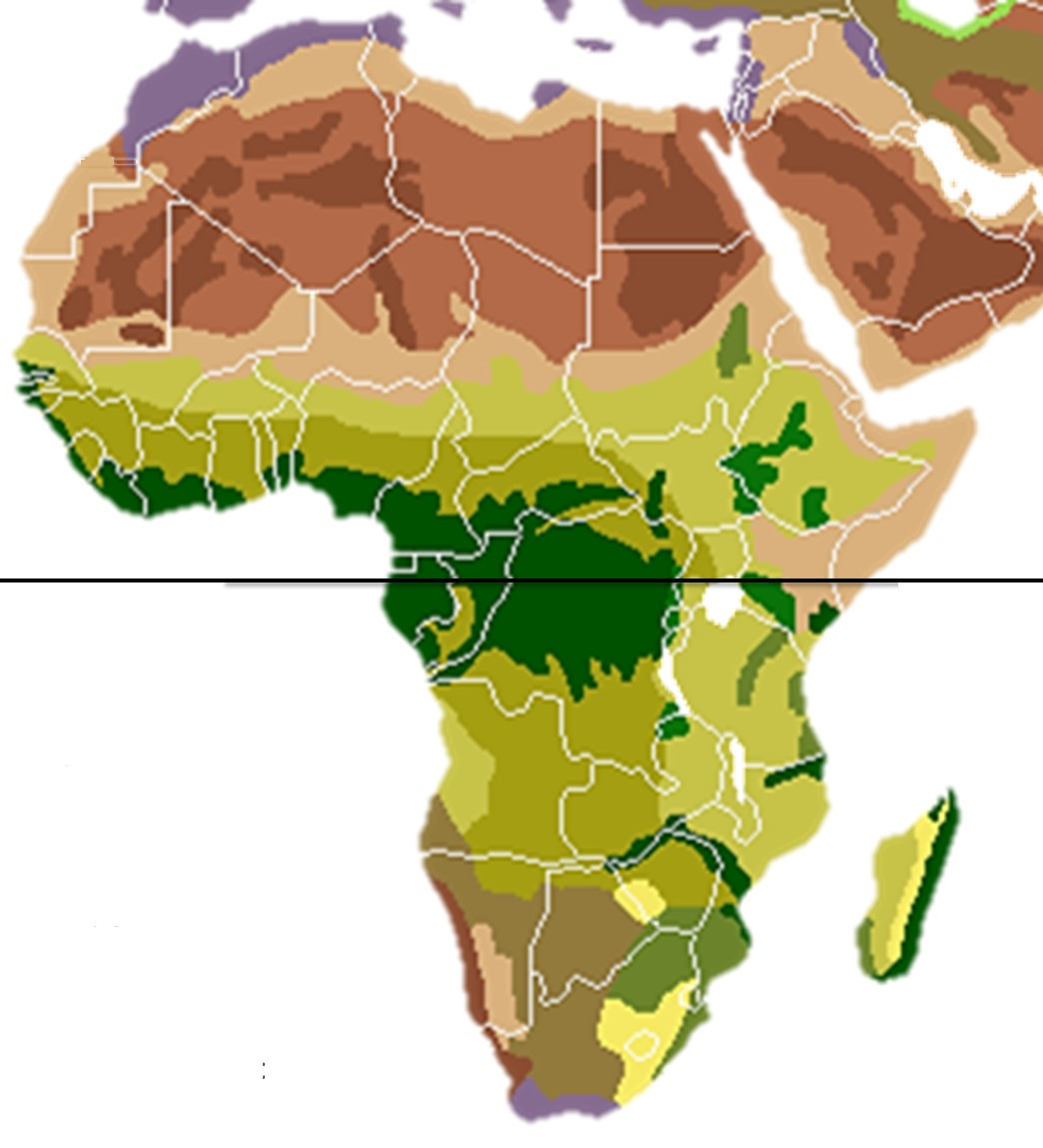Africa is a mosaic of climates and biomes. Two of its main characteristics are its extreme heat and dryness, making it the hottest and driest continent on the planet. Additionally, it is one of the most climate-sensitive regions in the world.
Arid lands represent more than 60% of the continent’s surface; it is therefore particularly sensitive to rainfall and its variations, which strongly influence the level of agricultural production and biodiversity. Indeed, although groundwater is abundant, the difficulty in exploiting it means that Africa is and will remain dependent for a long time on rainwater and surface water, the exploitation of which is not very rational: only 20% of the Sahel’s irrigation potential is exploited. The prevalence of onchocerciasis (river blindness) probably explains the absence of an irrigation tradition (with the notable exception of the Nile) on the continent, despite the presence of some of the most powerful rivers in the world.
The water issue largely determines the conditions for human development. Water stress, defined by the UN as “a lack of water of satisfactory quality to meet human and environmental needs” affects up to 300 million people through its consequences in terms of food security and health.
Conflicts, sometimes armed, such as Darfur in 2003, are caused at least partially by access to water or, more broadly, by climate change.
Even when water is not scarce in the strict sense, as in West Africa, which, overall, exceeds the volume of 1,700 m3 of water available per inhabitant per year, the threshold used to characterize water stress, the context of water availability makes the “Sudanese-Sahelian region dependent on a high variability of precipitation, both spatially and temporally”. It is not the abundance of the resource that is at issue, but its variability. Consequently, the possibility of using it in the right place and at the right time.
Another characteristic is that Africa is home to the second largest continuous forest massif in the world: that of the Congo Basin. For the entire continent, tree cover represents 21.8% of its surface area, although with a very uneven distribution, from zero for deserts to 85% for the country with the largest forest cover. But deforestation is considered the most serious environmental threat because forests are regressing; the continent lost more than 10% of its intact forests (a “natural” landscape considered to be both not artificially fragmented and not degraded) between 2000 and 2013 and it lost 3.4 million hectares of wood cover per year between 2000 and 2010, although attrition has slowed down (the loss was 4.1 million hectares per year in the 1990s). Demographic pressure, urban expansion, and shifting agriculture, including slash-and-burn cultivation, are all contributing significantly to the decline of natural environments. Deforestation also has a limiting influence on human development, as it is one of the main causes of land degradation. This can lead to desertification, given that 63% of the population of sub-Saharan Africa and 40% of that of North Africa are rural, and that 90% of Africans depend on wood and biomass for their energy needs. This massive use of solid fuels is also a significant cause of morbidity due to the indoor air pollution it causes.
Another environmental aspect of the continent is its biodiversity, which is very important (UNEP calls the continent a “biodiversity paradise”) but threatened. Eight of the thirty-four biodiversity hotspots, areas with a wealth of biodiversity that are particularly threatened by human activity, are located in Africa. Thirty-four countries (out of fifty-four) are seeing their biodiversity decline. In an attempt to limit the phenomenon, African countries have created 1,200 protected areas, covering 2.5 million km2 (250 million hectares).
All of this adds up to a situation where the continent, subject to “climate variability and extremes” is one of the most fragile and most endangered. “Climate change will progressively threaten Africa’s economic growth and the security of populations” because “Africa’s climate is already changing and the impacts are already being felt”, aggravating the environmental causes of food insecurity that already affects the continent.
Despite the Bamako Convention, Africa receives Western waste but has also produced more than 175 million tonnes produced per year since 2016. Sub-Saharan waste will be around 500 million in 2050. If African states are working to build their own waste management and treatment systems, there is still a long way to go before efficient treatment sectors emerge.
In Bamako, residents dump their rubbish in the street before burning it. Powerless, they suffer the consequences: rubbish, smoke, foul odors, as well as rats, cockroaches and flies.
From 4 to 6 September 2023, the first African climate summit was held in Kenya. It brought together 54 African countries, including 20,000 members of delegations from around the world. This first African summit resulted in the adoption by African leaders of the “Nairobi Declaration”, in which they asked the international community to help them finance renewable energy projects, with the aim of achieving their energy transition.
The largest country in Africa by area, the tenth largest in the world, is Algeria, while the Seychelles archipelago, off the east coast of Africa, is the smallest and least populated (approx. 91,000 inhabitants). The smallest continental state is Gambia. The most populous is Nigeria (184 million inhabitants in 2015), ranking seventh in the world.
For more information :
- https://fr.wikipedia.org/wiki/Portail:Afrique
- https://en.wikipedia.org/wiki/Africa
- https://africacenter.org/
- https://journals.openedition.org/etudesafricaines/
- https://etudes-africaines.cnrs.fr/
- https://journals.openedition.org/etudesafricaines/
- https://www.afdb.org/fr/documents-publications/economic-perspectives-en-afrique-2024


